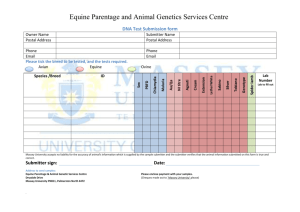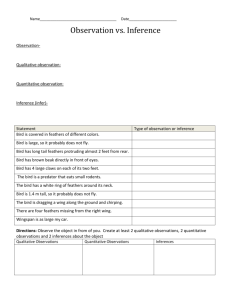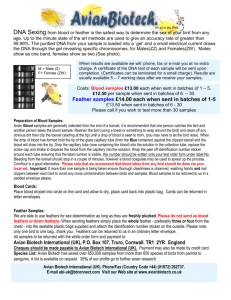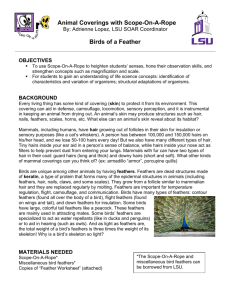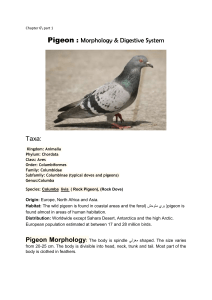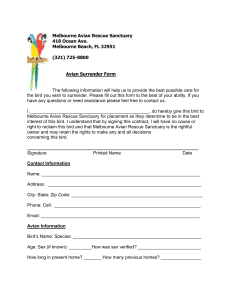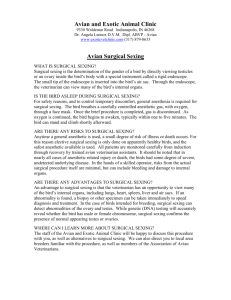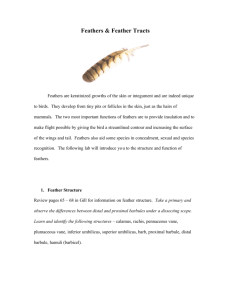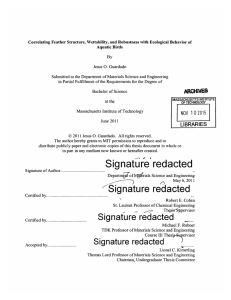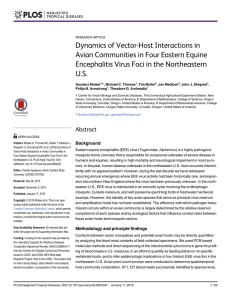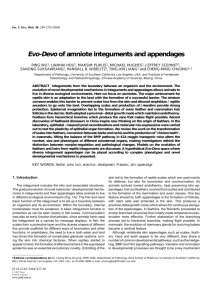equine parentage and animal genetics services
advertisement
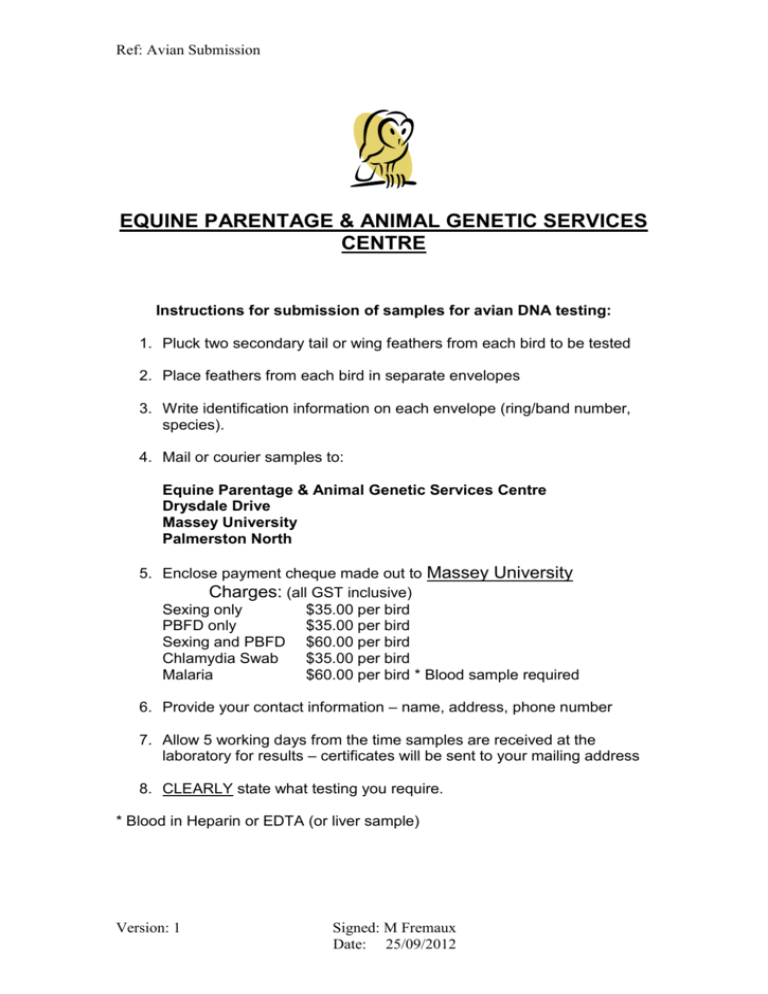
Ref: Avian Submission EQUINE PARENTAGE & ANIMAL GENETIC SERVICES CENTRE Instructions for submission of samples for avian DNA testing: 1. Pluck two secondary tail or wing feathers from each bird to be tested 2. Place feathers from each bird in separate envelopes 3. Write identification information on each envelope (ring/band number, species). 4. Mail or courier samples to: Equine Parentage & Animal Genetic Services Centre Drysdale Drive Massey University Palmerston North 5. Enclose payment cheque made out to Massey University Charges: (all GST inclusive) Sexing only $35.00 per bird PBFD only $35.00 per bird Sexing and PBFD $60.00 per bird Chlamydia Swab $35.00 per bird Malaria $60.00 per bird * Blood sample required 6. Provide your contact information – name, address, phone number 7. Allow 5 working days from the time samples are received at the laboratory for results – certificates will be sent to your mailing address 8. CLEARLY state what testing you require. * Blood in Heparin or EDTA (or liver sample) Version: 1 Signed: M Fremaux Date: 25/09/2012 Ref: Avian Submission EQUINE PARENTAGE AND ANIMAL GENETICS SERVICES CENTRE Avian-Sex /PBFD/Chlamydia/Malaria CLIENT NAME: ADDRESS: PHONE: FAX: Sample Species and ID Sex PBFD Chlam Malaria Please enclose payment with your samples. (Cheques made out to `Massey University’ please) Send to: Version: 1 Dr J.I.Cahill Equine Parentage and Animal Genetics Services Centre Drysdale Drive Massey University Palmerston North 4410 Signed: M Fremaux Date: 25/09/2012 Ref: Avian Submission Taking feather samples. To reduce the chance of contamination, don’t touch the `QUILL’ of the feather with your fingers. If taking samples from more than one bird, use an alcohol hand sanitiser between handling birds. Note: Feathers must be pulled from the bird, not picked up from the cage. If the quill breaks off in the skin, we cannot use it for DNA extraction as the shaft is hollow and only the very tip has good cells that contain DNA. If the tip is so small YOU can’t see if…WE probably can’t either. Place the feather in a paper envelope, especially if it is a blood feather as these can rot. Blood feathers contain the most/best DNA for testing, although normal feathers are adequate. Version: 1 Signed: M Fremaux Date: 25/09/2012
